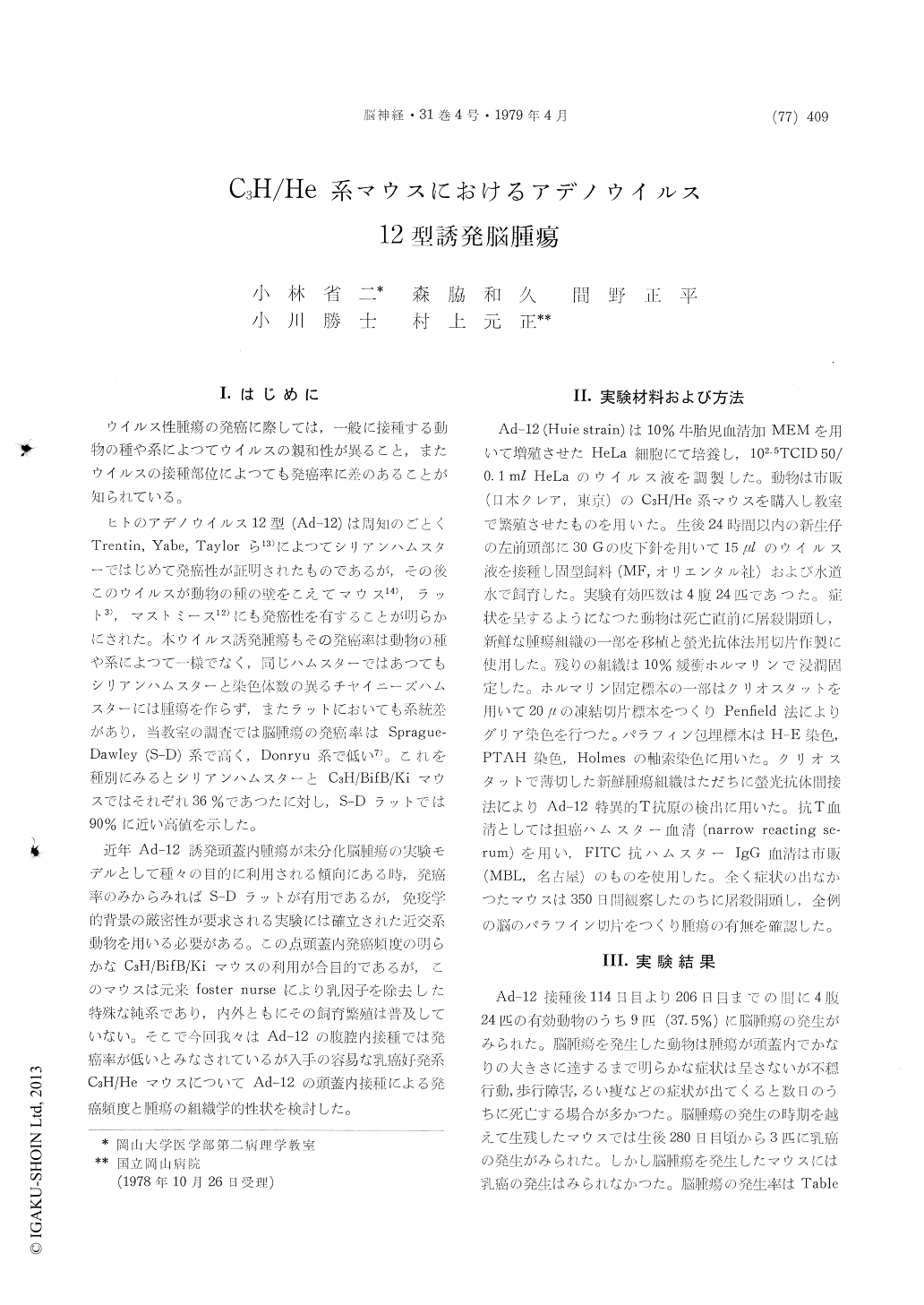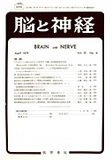Japanese
English
- 有料閲覧
- Abstract 文献概要
- 1ページ目 Look Inside
I.はじめに
ウイルス性腫瘍の発癌に際しては,一般に接種する動物の種や系によつてウイルスの親和性が異ること,またウイルスの接種部位によつても発癌率に差のあることが知られている。
ヒトのアデノウイルス12型(Ad−12)は周知のごとくTrentin, Yabe, Taylorら13)によつてシリアンハムスターではじめて発癌性が証明されたものであるが,その後このウイルスが動物の種の壁をこえてマウス14),ラット3),マストミース12)にも発癌性を有することが明らかにされた。本ウイルス誘発腫瘍もその発癌率は動物の種や系によつて一様でなく,同じハムスターではあつてもシリアンハムスターと染色体数の異るチヤイニーズハムスターには腫瘍を作らず,またラットにおいても系統差があり,当教室の調査では脳腫瘍の発癌率はSprague—Dawley (S-D)系で高く,Donryu系で低い7)。これを種別にみるとシリアンハムスターとC3H/BifB/Kiマウスではそれぞれ36%であつたに対し,S-Dラットでは90%に近い高値を示した。
It is well known that the intracranial injection of fluid containing human adenovirus type 12 (Ad-12) can result in the development of immature types of neurogenic brain tumors in hamsters, rats, and the C3H/BifB/Ki strain of mice. Recently, brain tumors induced by Ad-12 have been used as an experimental model of undifferentiated brain tumor. However, experiments based on a strict immunological background must use established inbred animals which are commercially available. In this experiment, the incidence and morphological appearance of brain tumors induced by Ad-12 were studied using C3H/He mice which carry the milk factor. Within 24 hours after birth, 15 πl of adenovirus fluid (102.5TCID50/0.1 ml HeLa) was injected into the left frontal area of the mouse brain. Nine of 24 mice which were inoculatedwith adenovirus fluid developed brain tumors within 114 to 206 days after virus inoculation. Most of the brain tumors appeared in areas close to the ventricles. The incidence of intracranial tumors in C3H/He mice following intracranial administration of Ad-12 was higher than the incidence of intra-peritoneal tumors following intraperitoneal admin-istration of the same virus. The mice developing brain tumors after Ad-12 administration did not develop any spontaneous mammary tumors. Two of the three mammary tumors which developed occurred in the litter that failed to develop any brain tumors after the inoculation of Ad-12. These results suggest that endogenous RNA tumor virus responsible for the spontaneous mammary tumors in C3H/He mice may interfere in the induction of brain tumors by Ad-12. The histological ap-pearance of the brain tumors in this C3H/He strain was identical with that of the brain tumorsinduced in rats, hamsters and other strains of mice by the same virus. Histologically, tumors were classified as type S (subventricular zone type), type V (ventricular zone type), type G (glioblastic type) or type A (anaplastic type). The basic pattern was type S, type V or type G, each containing more or less anaplastic areas mixed with bizarre giant cells (type A). Axonal silver implegnation (Holmes method) failed to demonstrate any neuronal processes in the cells of these tumors. Short argyrophilic fibers were revealed by double silver carbonata implegnation (Penfield method) in a very small number of cells of type G tumor. Using an indirect immunofluorescent method, the presence of adenovirus specific T-antigen (s) in the cyto-plasm of the brain tumor cells was confirmed. These antigen (s) could not be demonstrated in the spontaneous mammary tumor cells.

Copyright © 1979, Igaku-Shoin Ltd. All rights reserved.


